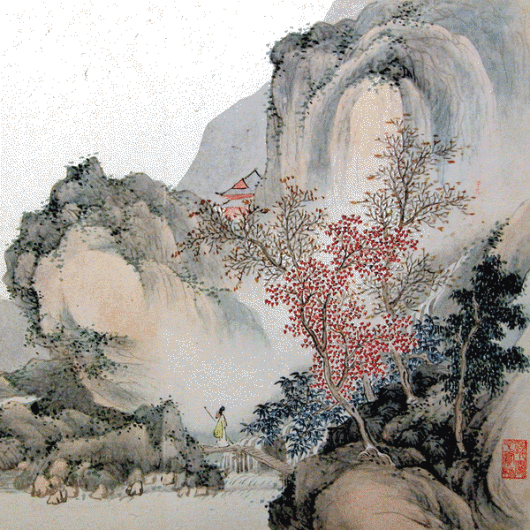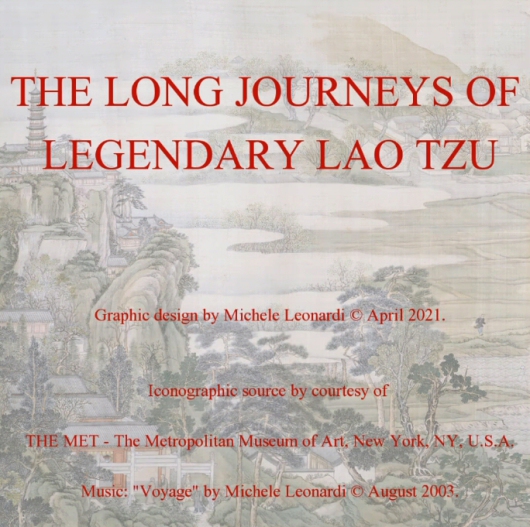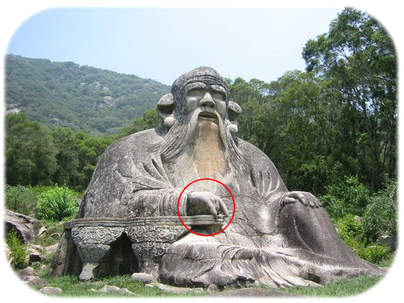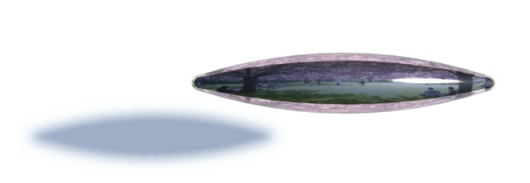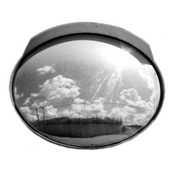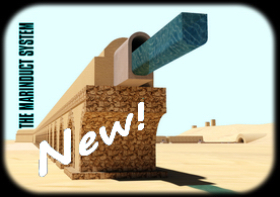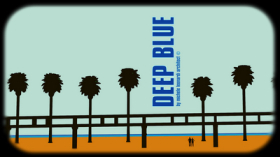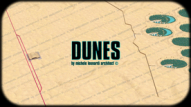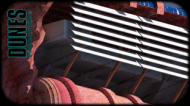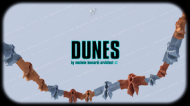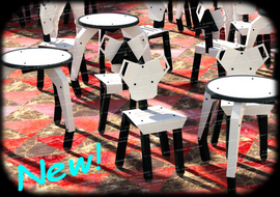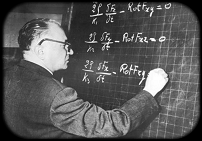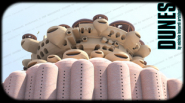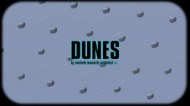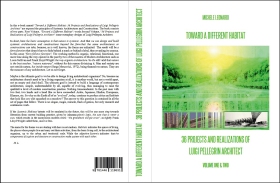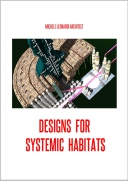time to lose 3
seconds and minutes of well wasted time
"The long journeys of legendary Lao Tzu", basic version:
4 minutes and 53 seconds of well wasted time.
Animation and graphic design by
Michele Leonardi © April 2021
For the commercial use or any different use of my animations,
graphics, video and pictures, please contact me. M.L.
"The long journeys of legendary Lao Tzu" - best version:
15 minutes and 57 seconds of well wasted time.
"The most important journey is the one in the spiritual world,
beyond the infinite forms." M.L.
Michele Leonardi © April 2021
ON THE PHILOSOPHICAL TAOISM
Alan Watts: "Tao: The Watercourse Way", 138 pages, Pantheon, 1975.
The Tao is the way of man's cooperation with the natural course of the natural world, its principles can be found in the flow patterns of water. Alan Watts captures the Spirit of the Tao, the actual experience of that attitude to life. The ancient and timeless Chinese wisdom is medicine for the ills of the West but it cannot be taken as medicine but intellectually swallowed to joyously infuse our being, transforming our individual lives and through them our society. Drawing on ancient and modern sources, Watts treats the Chinese philosophy of Tao in much the same way as he did Zen Buddhism in his classic The Way of Zen. Alan Watts has been described as the best guide to the spirit of the Tao for a western readership. Including an introduction to the Chinese culture that is the foundation of the Tao this is one of Alan Watts' best-loved works.
Editor's note: indispensable for understanding The Philosophical Taoism and all its apparent paradoxes, because the philosophical Taoism is very simple and, at least in my opinion and in that of some authors cited below, it is not a religion, not even pantheistic, as historically definited by the philosopher Dagobert D. Runes (1902-1982) in his "Dictionary of Philosophy". M.L.
Lao Tzu: "Tao Te Ching: The Book of the Way and Its Virtue", by J.J.L. Duyvendak Translator, with Chinese text, John Murray Pub., London, 1954.
Perhaps no text, like the Tao-tê-ching, contains so much wisdom in so few words. Written, according to Chinese tradition, in the 6th century BC. from the legendary Lao Tzu and, according to philologists, in an age oscillating between the sixth and third centuries BC, the Tao-tê-ching is the book of the founder of the religion and of the Taoist philosophical school. But the doctrine expounded in this short work certainly did not originate with Lao Tzu. Indeed, it must be said that the Tao-tê-ching itself introduces us to those categories without which a large part of archaic Chinese civilization would be completely incomprehensible to us: the Tao, the "Way", regulator of totality; the Tê, "Virtue", but rather in the sense of "magical power"; Yin and Yang, feminine and masculine principles; the Wu wei, "Do not act", recipe of supreme efficacy. These categories are at the same time cosmic, personal, political, social, sapiential, and appear to us in short, deceptively simple sentences, which have an endless resonance, that of a teaching that is both the maximum of paradoxicality and the maximum of evidence.
This marvelous text was judged by Marcel Granet to be "properly untranslatable" - and perhaps for this reason too it is one of the oriental texts that have had more translations in the West, some very important, like those of Wilhelm and Waley, many others absolutely inadequate. The one presented here is that of the great Dutch sinologist J.J.L. Duyvendak: fairly recent, but now classic, it is the result of a true "hand-to-hand struggle with the text itself" and offers us not only literally very happy linguistic solutions, but also a precious comment, where Duyvendak illuminates all the decisive points text, pointing out the difficulties each time and reporting the various interpretations that have been given by Chinese and Western commentators. Furthermore, Duyvendak considered it essential to subject the traditional text to a close philological analysis, which came to us through very troubled events and in a very uncertain state, and was thus able to give us a critical reconstruction of it that the reader will find at the end of the volume, alongside the traditional text itself.
Zhuangzi: "Zhuangzi: The Complete Writings", 336 pages, Brook Ziporyn Translator, Bilingual Edition, Hackett Publishing Company, 2020.
Brook Ziporyn's carefully crafted, richly annotated translation of the complete writings of Zhuangzi - including a lucid Introduction, a Glossary of Essential Terms, and a Bibliography - provides readers with an engaging and provocative deep dive into this magical work.
Sun Tzu: "The Art of War: Complete Text and Commentaries", translated by Thomas Cleary, 474 pages; Shambhala Publisher, Reprint edition, 2003.
Sun Tzu's Art of War, compiled more than two thousand years ago, is a study of the anatomy of organizations in conflict. It is perhaps the most prestigious and influential book of strategy in the world today. Now, this unique volume brings together the essential versions of Sun Tzu's text, along with illuminating commentaries and auxiliary texts written by distinguished strategists. The translations, by the renowned translator Thomas Cleary, have all been published previously in book form, except for The Silver Sparrow Art of War, which is available here for the first time.
Editor's note: this book reductively described in two words: paradoxically, ideally the greatest of generals is the one who hasn't even fought a war, not because he's a coward, but because he won it at the root, having known how to prevent it, cutting it at its birth. A discovery of hot water? No, because nothing is more difficult to understand than what is obvious, in a simplified words by the Anglo-American organic philosopher and mathematician Alfred North Whitehead (1861-1947), co-author with Bertrand Russel of "Principia Mathematica". M.L.
A.C. Graham: "The Book of Lieh Tzu: A Classic of Tao", Columbia University Press, New York, 1960, reprint edition 1990.
"Nothing is worth more than stillness and nothing is worth more than emptiness. In quiet and emptiness you find your home, in taking and giving you lose your place."
J.C. Cooper: "Yin & Yang: The Taoist Harmony of Opposites", 132 pages, The Aquarian Press, Wellingborought, Northamptonshire, 1981.
An introductory essay on the basic goal of Taoism - to balance and harmonize the two poles of the yin and the yang, between which all manifestation takes place.
Kristofer Schipper: "The Taoist Body", 273 pages, University of California Press, Berkeley, Los Angeles, London, 1993; first published in 1982 as "Le corps taoïste" by Librairie Arthème Fayard, Paris.
"The ancient system of thought known as Taoism remains today the least well known of the world's great religions and one of the most inaccessible wellsprings of Chinese culture. This is in large part because Western thought, despite the unifying insights of recent science, clings to the notion of the separation of matter and spirit, body and soul. Taoism refuses this dualism and considers the body's survival as essential as the soul's survival is to Christianity." From the book cover.
"The I Ching: Or Book of Changes", by Richard Wilhelm Translator, with a foreword by Carl Gustav Jung; 816 pages, Penguin Books, UK, 1995.
At least 5000 years old, the I Ching is a book of oracles containing the whole of human experience. Used for divination, it is a method of exploring the unconscious; through the symbolism of its hexagrams we are guided towards the solution of difficult problems and life situations. It can also be read as a book of wisdom revealing the laws of life to which we must all attune ourselves if we are to live in peace and harmony.
Editor's note: The I Ching and Popular Taoism was generally despised by the ancient Taoist philosophers, as considered a collection of useless nonsense and superstitions, which complicate our lives for nothing, like any form of moralism and fake virtue. However, underlying popular Taoism there is still the matrix of ancient Taoist and Chinese thought, worthy of great consideration. M.L.
Bruce Lee: "The Tao of Gung Fu: A Study in the Way of Chinese Martial Art", John Little Editor, Introduction by Linda Lee Cadwell, Foreword by Taky Kimura, 200 pages, Illustrated Edition, Tuttle Publishing, 2016.
Bruce Lee totally revolutionized the practice of martial arts and brought them into the modern world - by promoting the idea that students have the right to pick and choose those techniques and training regimens which suit their own personal needs and fighting styles. He developed a new style of his own called Jeet Kune Do - combining many elements from different masters and different traditions. This was considered heretical at the time within martial arts circles, where one was expected to study with only a single master - and Lee was the first martial artist to attempt this. Today he is revered as the "father" of martial arts practice around the world - including Mixed Martial Arts.
In addition to presenting the fundamental techniques, mindset and training methods of traditional Chinese martial arts, this martial art treatise explores such esoteric topics as Taoism and Zen as applied to Gung Fu, Eastern and Western fitness regimens and self-defense techniques. Also included is a Gung Fu "scrapbook" of Bruce Lee's own personal anecdotes regarding the history and traditions of the martial arts of China. After Lee's death, his manuscript was completed and edited by martial arts expert John Little in cooperation with the Bruce Lee Estate. This book features an introduction by his wife, Linda Lee Cadwell and a foreword from his close friend and student, Taky Kimura.
Bruce Lee: "Bruce Lee Striking Thoughts: Bruce Lee's Wisdom for Daily Living", John Little Editor, 228 pages, Tuttle Publishing, 2000.
"A teacher is never a giver of truth - he is a guide, a pointer to the truth that each student must find for himself. A good teacher is merely a catalyst." - Bruce Lee.
Within the pages of Striking Thoughts, you will find the secrets of Bruce Lee's incredible success - as an actor, martial artist, and inspiration to the world. Consisting of eight sections, Striking Thoughts covers 72 topics and 825 aphorisms - from spirituality to personal liberation and from family life to filmmaking - all of which Bruce lived by.
His ideas helped energize his life and career and made it possible for him to live a happy and assured life, overcoming challenging obstacles with seeming ease. His ideas also inspired his family, friends, students, and colleagues to achieve success in their own lives and this personal collection will help you in your journey too.
Sections include: On First Principles - including life, existence, time, and death. On Being Human - including the mind, happiness, fear, and dreams. On Matters of Existence - health, love, marriage, raising children, ethics, racism, and adversity. On Achievement - work, goals, faith, success, money, and fame. On Art and Artists - art, filmmaking, and acting. On Personal Liberation - conditioning, Zen Buddhism, meditation, and freedom. On the Process of Becoming - self-actualization, self-help, self-expression, and growth. On Ultimate (Final) Principles - Yin-yang, totality, Tao, and the truth.
Editor's note: An aphorism wrongly attributed to Lao Tzu and Tao-tê-ching: "What the caterpillar calls the end of the world, the master calls a butterfly":
This maxim fits well with the Taoist thought of Chuang-tzu, or Lao-tzu, or rather, with physical and spiritual change. it is attributed by many people to Lao-tzu, but there is no such thing in the Tao-tê-ching. Instead it is certainly found in the incipit of chapter 19 of "Illusions" by Richard Bach with the following words: "What the caterpillar calls the end of the world, the master calls it a butterfly". But there are those who argue that it is instead an ancient Chinese saying, perhaps Confucian; but if so, then why not quote the source of this information at the same time? Whoever it is attributed to, expresses well the concept of fear of change, or the fear of the future. On the contrary: "Change is the only true law of nature", by the words - more o less - of Frank Lloyd Wright (1867-1959), the famous master of modern architecture. We add that he was also familiar with philosophic Taoism. M.L.
A little exorcism is not yet obscene superstition.
Greetings from China.

